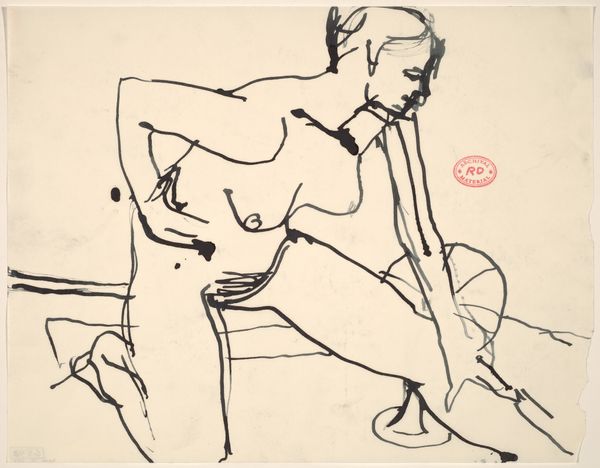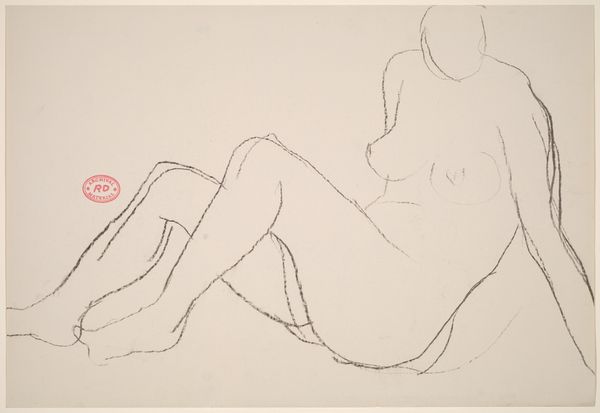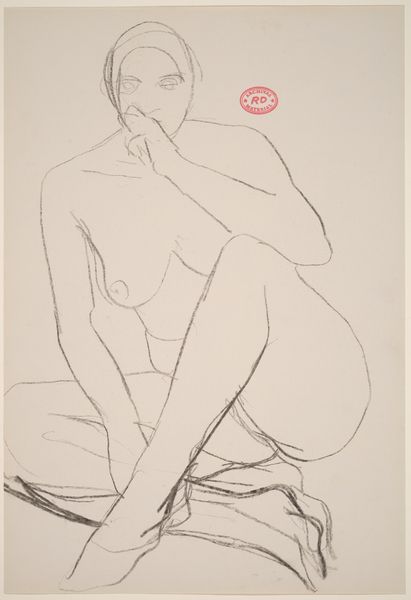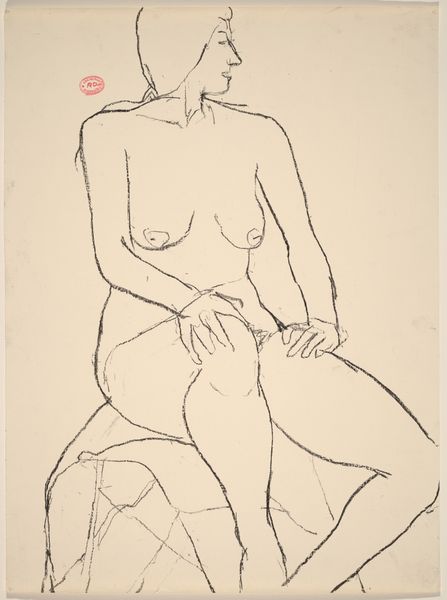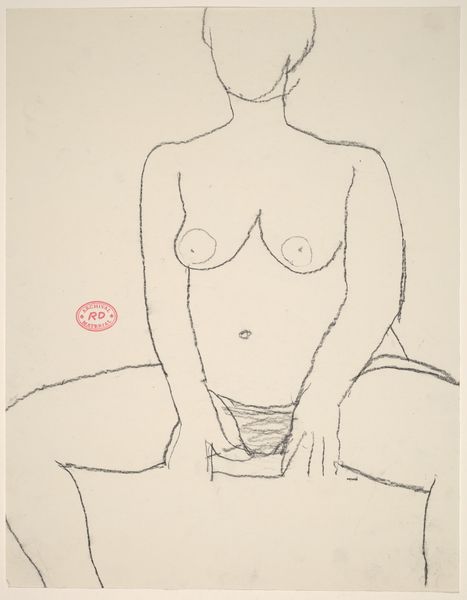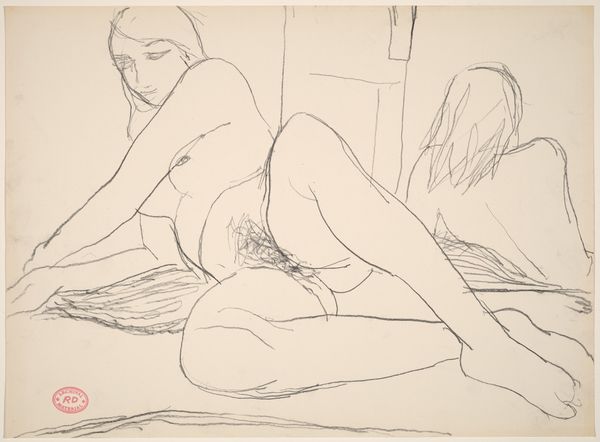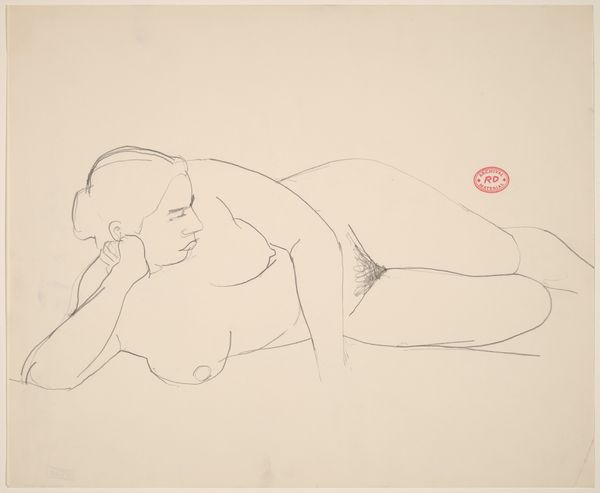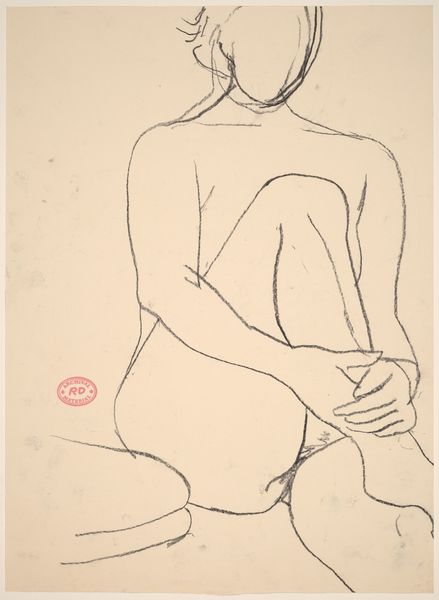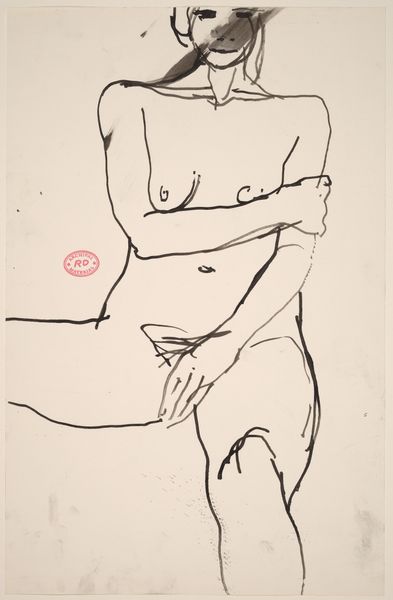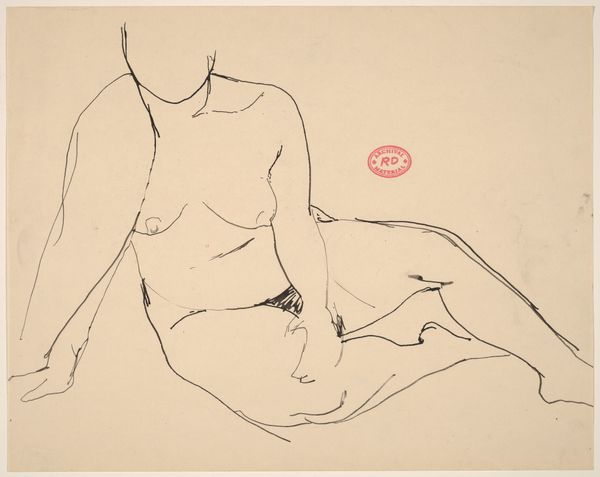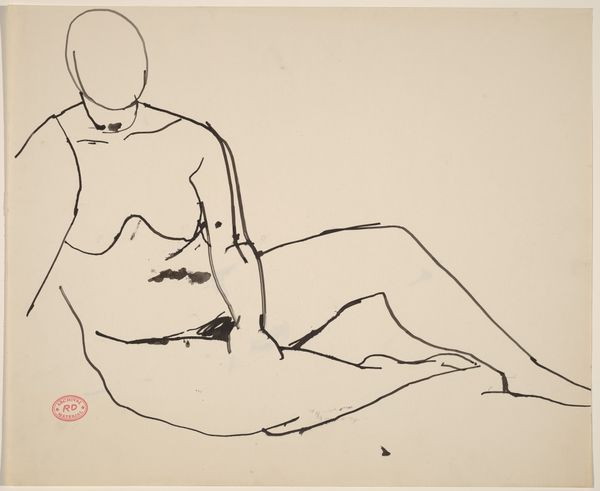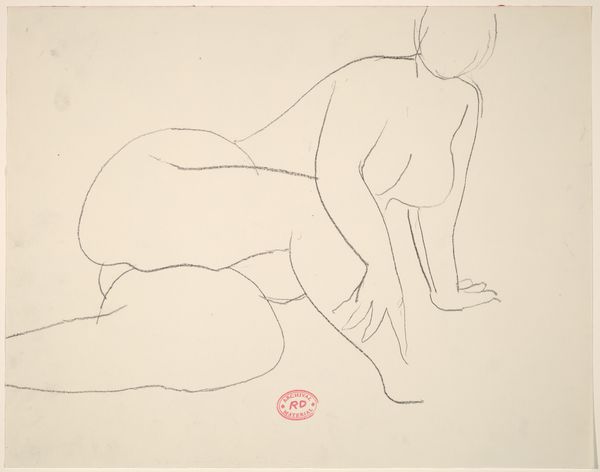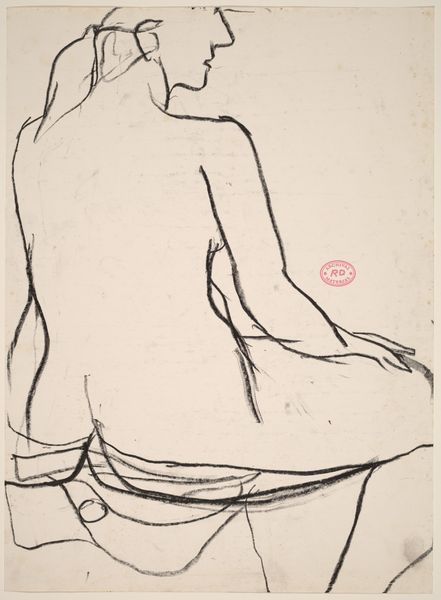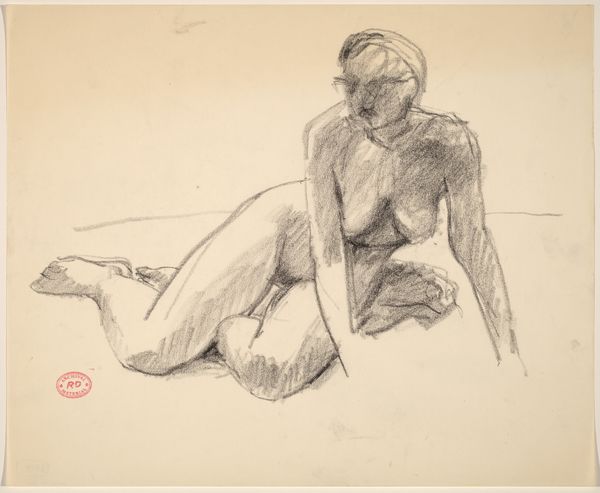![Untitled [seated nude leaning on hands] by Richard Diebenkorn](/_next/image?url=https%3A%2F%2Fd2w8kbdekdi1gv.cloudfront.net%2FeyJidWNrZXQiOiAiYXJ0ZXJhLWltYWdlcy1idWNrZXQiLCAia2V5IjogImFydHdvcmtzLzdjMzllZTA4LTNjY2ItNDk1Yi04ZGFiLThkNzg1ZmY3NGM2Zi83YzM5ZWUwOC0zY2NiLTQ5NWItOGRhYi04ZDc4NWZmNzRjNmZfZnVsbC5qcGciLCAiZWRpdHMiOiB7InJlc2l6ZSI6IHsid2lkdGgiOiAxOTIwLCAiaGVpZ2h0IjogMTkyMCwgImZpdCI6ICJpbnNpZGUifX19&w=3840&q=75)
drawing, ink
#
portrait
#
abstract-expressionism
#
drawing
#
ink drawing
#
figuration
#
bay-area-figurative-movement
#
ink
#
pencil drawing
#
portrait drawing
#
nude
Dimensions: sheet: 40.6 x 27.9 cm (16 x 11 in.)
Copyright: National Gallery of Art: CC0 1.0
Curator: This is an ink drawing by Richard Diebenkorn, created sometime between 1955 and 1967. It’s titled “Untitled [seated nude leaning on hands].” Editor: The immediacy of this piece really strikes me. It feels almost unfinished, a fleeting glimpse captured in ink. Curator: Indeed. The visible pencil underdrawing creates a linear scaffolding which the ink confidently traces and occasionally departs from, giving the figure a dynamic sense of form and space. Semiotically, the unfinished nature disrupts conventional notions of idealised female representation. Editor: Absolutely, and think of the cultural moment it arrives into – Post-war America where traditional depictions of the nude were rapidly evolving under shifting social norms. Consider the artist's potential intent; not to render perfection, but rather to convey an intimate sense of the model’s presence and being. This very rough rendering and its resulting tension is interesting as a form of proto-feminist expression in some ways. Curator: The composition directs our attention across the torso where several dense areas of inking create tonal gravity. This is structurally offset by the more delicate and thinly sketched extremities which radiate a graphic lightness around the central forms. I'd say his mastery lies in managing the tensions created by a dichotomy of both positive and negative space, the bold and thin strokes and their collective structural consequence to the representation. Editor: From a historical perspective, Diebenkorn's turn to figuration during this period was a distinct break from the pure abstraction popular at the time. Remember abstract expressionism's grip on the market! In doing so he actively entered the contested arena for figurative work with renewed possibilities – perhaps challenging the artistic establishment itself. How was a body meant to be viewed, and moreover how could one challenge historical norms around body representation at all. Curator: Agreed. Ultimately, Diebenkorn's formal vocabulary uses its graphic nature to question established figurative paradigms; and to posit his unique construction of abstract visual strategies, while engaging our reading of bodily expression. Editor: Right. I walk away appreciating how such an apparently quick sketch provides an intersection into the artist’s aesthetic considerations of line, form, social norms around figure construction, as well as a unique personal vision into postwar artistic production.
Comments
No comments
Be the first to comment and join the conversation on the ultimate creative platform.
